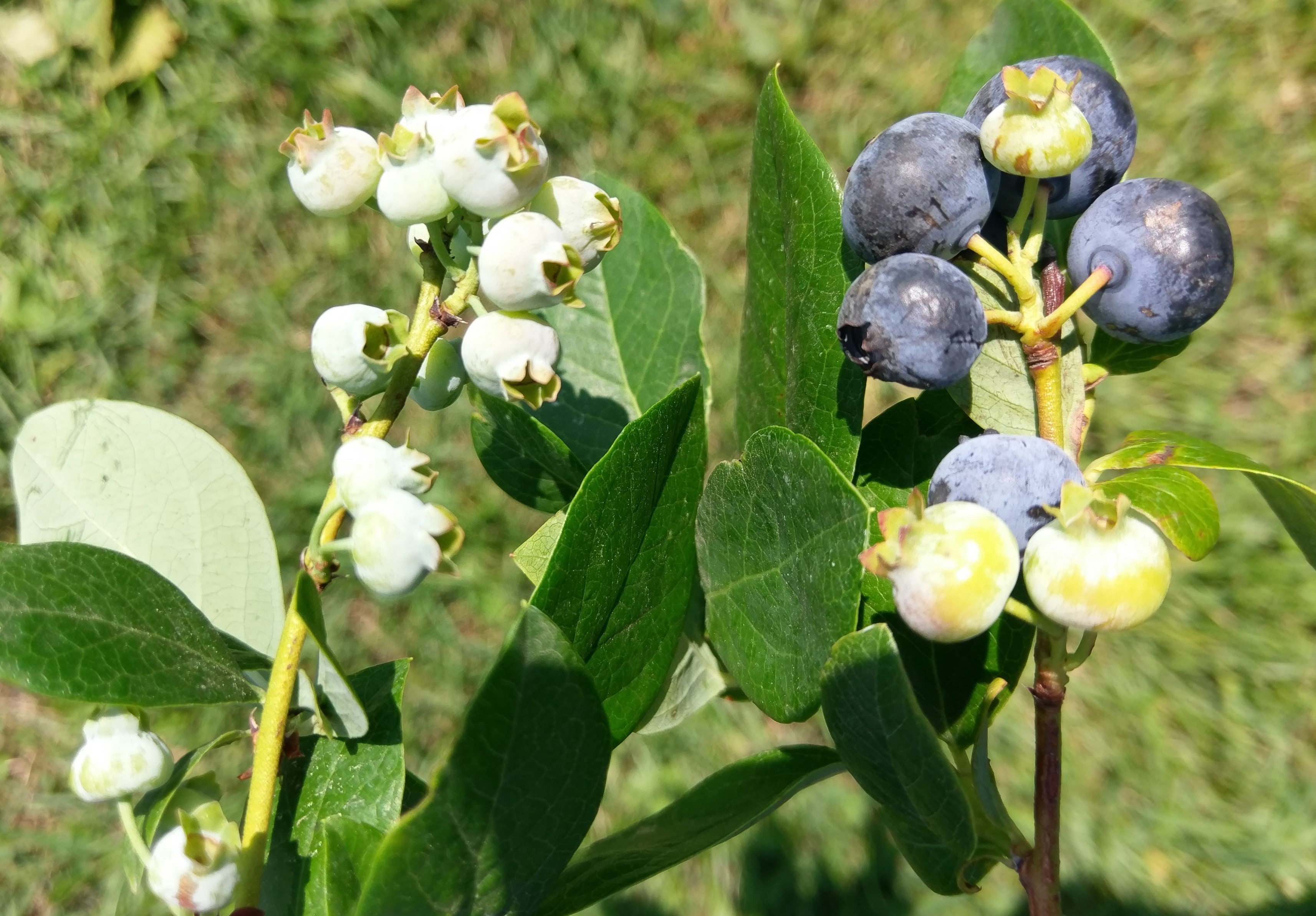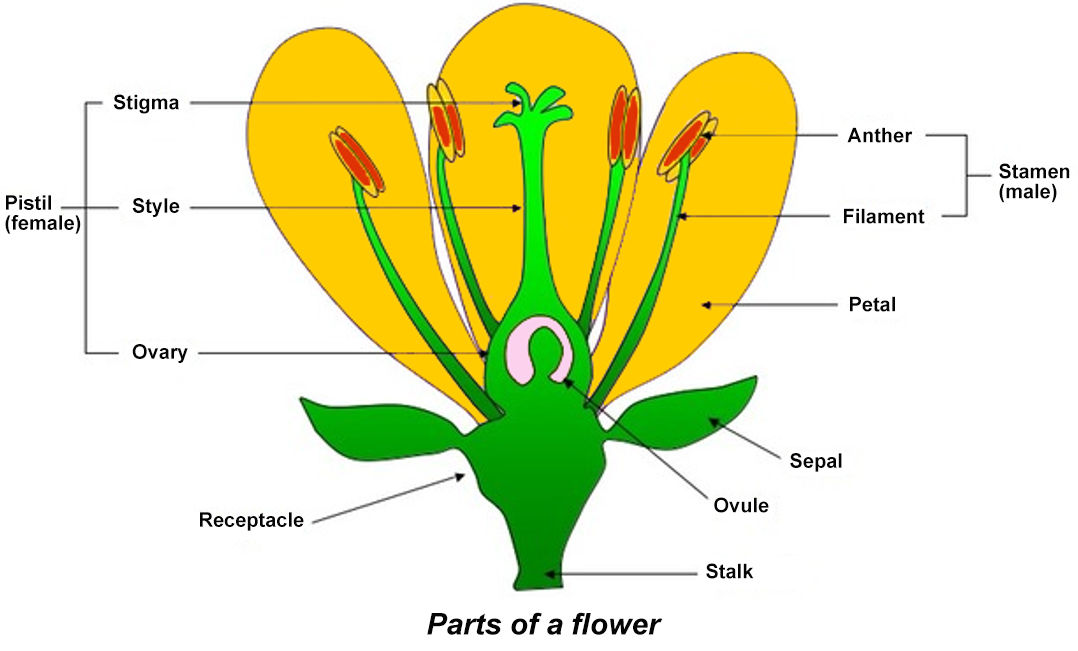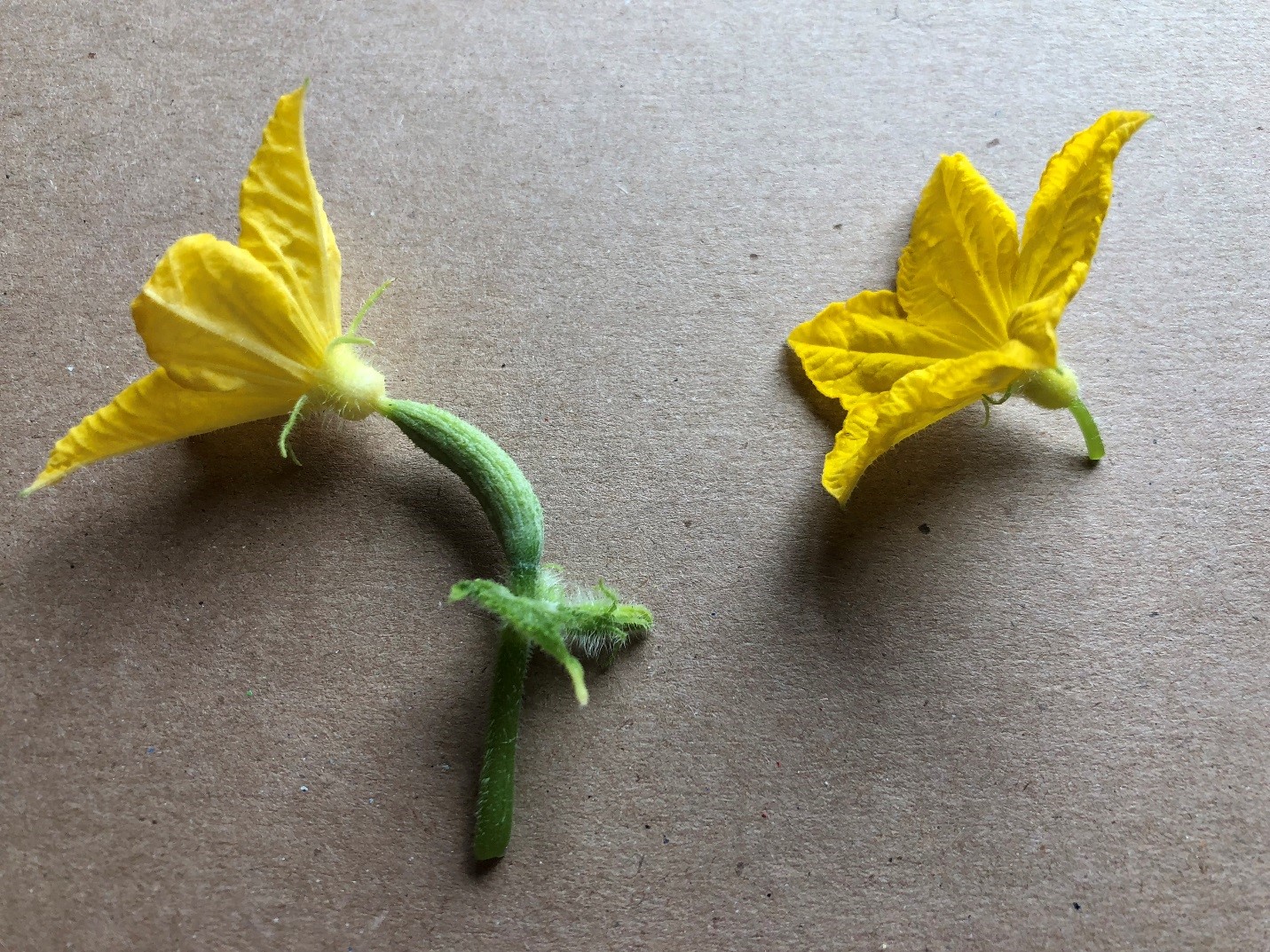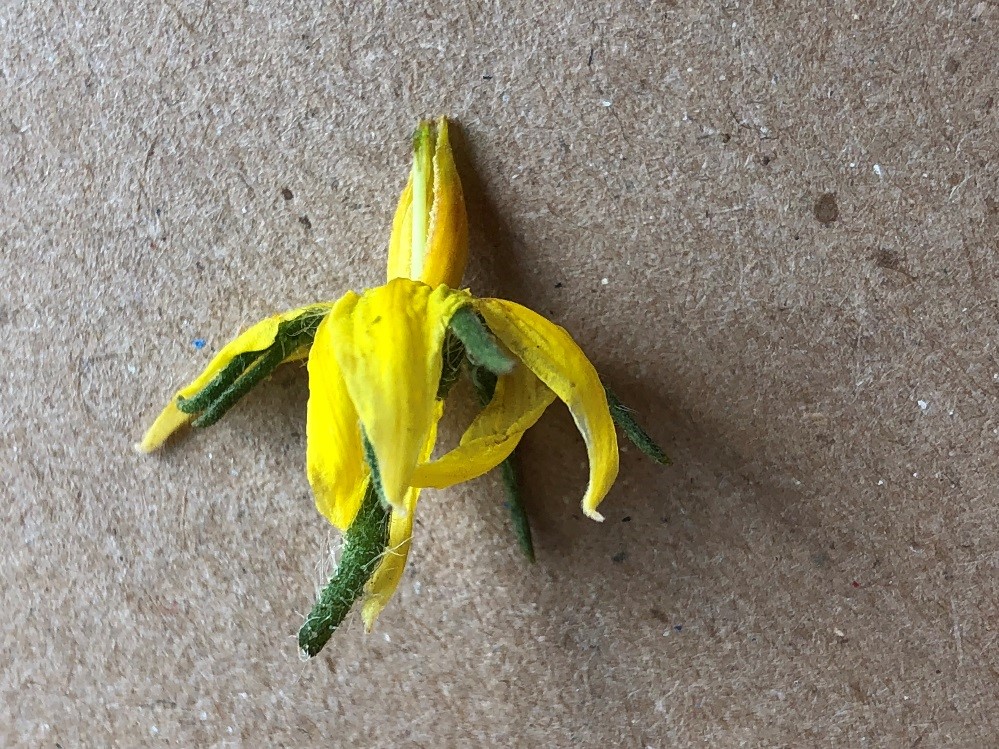
Smart Gardening: Pollination in vegetable gardens and backyard fruit
DOWNLOADOctober 1, 2018 - Esther E. McGinnis, North Dakota State University; Nathaniel Walton and Erwin Elsner, Michigan State University Extension; Janet Knodel, North Dakota State University
Bees are important insect pollinators for bountiful home vegetable gardens and backyard fruits. Both European honey bees and native bees, such as bumble bees, help ensure fruit set and higher yields. Learning about the process of pollination can help smart gardeners attract and safeguard these important insects.

What is pollination?
Pollination is the deposit of pollen grains from the anther (male structure) onto the pistil (female structure) of the same plant species (Fig. 1). Pollen can be transferred within an individual flower or between separate flowers. Successful pollination results in the production of viable seeds and a fruit to protect them.
Most crop plants are pollinated by insects or wind. Many agronomic crops, such as wheat and corn, rely on wind pollination. In contrast, many fruits and vegetables require or benefit from insect pollination. Common insect pollinators include bees, butterflies and flies. Of these pollinators, bees are the most important in home gardens.

The role of pollinators in the vegetable garden
Common plants in the cucurbit family include cucumbers, squash, zucchini, pumpkins, watermelon and muskmelon. Most cucurbits depend on bee pollination because each plant produces separate male and female flowers rather than having both sets of reproductive parts in each flower. Such flowers are called “imperfect.” Bees are essential to cross-pollinate or carry pollen from the male flower to the receptive female flower.
The cucurbit male flower contains three to five stamens with pollen- producing anthers. The female flower produces a single style with three stigmas. The easiest way to distinguish between the two flower sexes is to look for an ovary below the yellow petals. Female flowers have a swollen ovary or fruit and male flowers do not (Fig. 2).

Gardeners frequently ask why they have so many flowers on their cucumbers, but no fruit set. Look closely at the flowers to answer this question. In many cucumber cultivars, the first set of flowers are all male, which do not bear fruit. Both male and female flowers will then be produced in the second wave of blooms.
If female flowers are present but no fruit develops, then the problem may be a lack of pollinators. In the short-term, you can fill the role of the bee with hand- pollination. Take a clean paintbrush and insert it into the male flower to gather pollen. Then, transfer pollen to the stigmas of an open female flower. Hand-pollination works best in the morning. For a long-term solution, create pollinator habitat near or in the garden to attract bees.
In contrast to cucurbits, Soloanaceae crops such as tomatoes, peppers and eggplants produce “perfect” flowers that contain male and female reproductive structures. Flower anatomy differs from the idealized image in Figure 1. Tomato anthers form a tube that completely surrounds the pistil (Fig. 3a). Figure 3b shows the anthers partially removed to reveal the pistil. Tomatoes, peppers and eggplants can be pollinated simply by wind shaking the pollen from the anthers onto the stigma. However, bumble bees can improve fruit set and size because they vibrate the flowers and shake pollen loose from the anthers.
Leafy greens (lettuce, spinach, arugula), cole crops (cabbage, broccoli, cauliflower, kale), root crops (carrots, beets, radishes, onions), legumes (peas, beans) and tuber crops (potatoes) do not require bees to produce an edible harvest.


The role of pollinators in growing fruit
Bee pollination is important for growing tree fruits and small fruits. Many tree fruits such as apples and pears are self-incompatible (Table 1). This means two separate cultivars must be planted to produce fruit. For example, a ‘Honeycrisp’ apple blossom will not set fruit if a bee deposits pollen from a second ‘Honeycrisp’ apple tree. Instead, the pollen must come from a cultivar that is genetically different and has an overlapping bloom time.
|
Table 1. Tree fruits that require bee pollination for optimal fruit set. | ||
|---|---|---|
|
Fruit |
Self-compatible (SC) or Self-incompatible (SI) |
Comments |
|
Apples |
SI |
Crabapple may be a pollen source |
|
Apricots |
Varies by cultivar |
|
|
Cherries (sweet) |
SI |
|
|
Cherries (tart) |
SC |
|
|
Peaches |
SC |
|
|
Pears |
SI |
|
|
Plums |
Most are SI but there are exceptions |
|
Fruits such as sour cherries are self-compatible and can set fruit in the absence of a second cultivar (Table 2). However, self-compatibility still requires bees to transfer pollen within the flower or between flowers for full pollination. The number of cherries on a tree is directly related to the number of bee visits.
Raspberries are another example of a self-compatible fruit that relies on bees for full pollination (Table 2). The average raspberry flower contains 100 to 125 pistils. To produce a normal berry that does not crumble, at least 75 to 85 of the pistils must be pollinated.
|
Table 2. Small fruits that require or benefit from bee pollination. | ||
|---|---|---|
|
Fruit |
Self-compatible (SC) or Self-incompatible (SI) |
Comments |
|
Blackberries |
SC |
|
|
Blueberries |
Varies by cultivar |
|
|
Currants/ gooseberries |
Generally SC, some variation |
|
|
Elderberries |
SC |
|
|
Haskaps |
SI |
Honeyberries are closely related |
|
Raspberries |
SC |
|
|
Saskatoon berries |
SC |
Sometimes called juneberries |
|
Strawberries |
SC |
Bee pollination reduces misshapen berries |
Best management practices to attract and protect pollinators
- Plant native and other well-adapted flowering plants for season-long bloom in or near the garden.
- Create nesting habitat for ground- and cavity-nesting bees.
- Do not spray insecticides or fungicides on flowering plants or fruit trees just before or during bloom.
- If pesticide applications are necessary, choose a product with the least toxicity to bees.
Resources
- Bee-utiful Landscapes: Building a Pollinator Garden from NDSU Extension
- Bees of the Great Lakes region and wildflowers to support them from MSU
For more information on a wide variety of Smart Gardening topics, visit www.migarden.msu.edu or call MSU’s Lawn and Garden hotline at 1-888-678-3464.
This work is supported by the Crop Protection and Pest Management Program 2017-70006-27175 from the USDA National Institute of Food and Agriculture. Any opinions, findings, conclusions or recommendations expressed in this publication are those of the author(s) and do not necessarily reflect the view of the U.S. Department of Agriculture.



 Print
Print Email
Email





